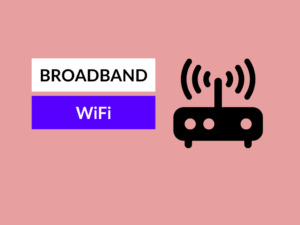The Difference Between Cat 6 and Cat 7 Cables
Introduction: Choosing the right network cable for your requirements is crucial to ensure a reliable and efficient network connection. Two popular options available in the market are Cat 6 and Cat 7 cables. In this article, we will explore the differences between Cat 6 and Cat 7 cables to help you make an informed decision.
What is Cat 6?
Cat 6, short for Category 6, is a type of Ethernet network cable commonly used for local area networks (LANs) and other high-speed applications. It offers improved performance compared to its predecessor, Cat 5e.
Examples of Cat 6:
Some common examples of Cat 6 cables include:
- Standard Cat 6 cable with RJ-45 connectors
- Outdoor or shielded Cat 6 cable for outdoor installations or where interference is a concern
- Flat or slim Cat 6 cable for easy installation in tight spaces
Uses of Cat 6:
Due to its enhanced capabilities, Cat 6 cables are commonly used for:
- Gigabit Ethernet connections
- Video and audio streaming
- Online gaming
- VoIP (Voice over Internet Protocol) applications
What is Cat 7?
Cat 7, also known as Category 7, is an Ethernet network cable standard that offers even greater performance compared to Cat 6. It is designed to support high-speed data transmission over longer distances.
Examples of Cat 7:
Some common examples of Cat 7 cables include:
- Standard Cat 7 cable with shielded twisted pairs and RJ-45 connectors
- Outdoor or burial-grade Cat 7 cable for underground installations
- Industrial-grade Cat 7 cable for harsh environments
Uses of Cat 7:
Cat 7 cables are often utilized in applications where high bandwidth and low latency are crucial, such as:
- Data centers
- Server farms
- Audiovisual installations
- 10 Gigabit Ethernet connections and beyond
Differences Between Cat 6 and Cat 7:
| Difference Area | Cat 6 | Cat 7 |
|---|---|---|
| Speed | Supports up to 10 gigabit per second (Gbps) | Supports up to 40 Gbps and 100 Gbps in the future |
| Bandwidth | Up to 250 MHz | Up to 600 MHz |
| Shielding | Unshielded Twisted Pair (UTP) | Fully shielded with individually shielded pairs (S/FTP) |
| Maximum Cable Length | Up to 55 meters for 10 Gbps, up to 100 meters for slower speeds | Up to 100 meters for 10 Gbps and slower speeds |
| Interference Protection | Less effective in reducing interference compared to Cat 7 | Superior in reducing crosstalk and electromagnetic interference |
| Supported Applications | Gigabit Ethernet, video streaming, VoIP, gaming | Data centers, server farms, AV installations, high-speed networks |
| Cost | Relatively more affordable compared to Cat 7 | Generally more expensive |
| Future-Proofing | Limited future support for higher data rates | Designed to support future higher-speed Ethernet technologies |
| Installation Complexity | Slightly easier installation process | Requires greater attention to shielding and grounding during installation |
| Availability | Widely available in the market | Less common and may require specialized suppliers |
Conclusion:
In summary, while Cat 6 is a reliable and cost-effective choice for most typical networking needs, Cat 7 offers superior performance and more advanced features. Cat 7 is ideal for high-speed, large-scale networking applications, making it a suitable choice for data centers, server farms, and other demanding environments.
Knowledge Check:
- True or False: Cat 6 can support up to 40 Gbps data transmission.
- Which cable has a higher bandwidth?
a) Cat 6
b) Cat 7 - What type of shielding does Cat 7 have?
a) Unshielded Twisted Pair (UTP)
b) Fully shielded with individually shielded pairs (S/FTP) - …
- …
- …
- …
- …
- …
- …
Answer: False
Answer: b) Cat 7
Answer: b) Fully shielded with individually shielded pairs (S/FTP)
Related Topics:
For more information on networking cables, you may find the following topics helpful:
- Differences between Cat 5e and Cat 6 cables
- Advantages of using fiber optic cables over Ethernet cables
- How to properly install and terminate network cables


